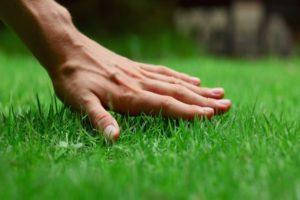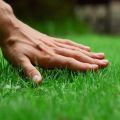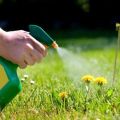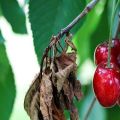How to effectively control weeds, a description of the best drugs and folk remedies
Weeds are the worst enemies of the gardener. They impede the full development of garden crops, disfigure the appearance of the lawn on the personal plot. Many mechanical, technical, chemical, folk methods have been invented on how to control weeds, but it is better to choose the one that will cause the least damage to the soil cover and cultivated vegetation.
The benefits and harms of weeds
There is no concept of "weeds" in the botanical classification. This name was given by gardeners to undesirable herbaceous species actively growing on lawns, flower beds, beds. In nature, these herbs are useful, they are an important part of ecosystems, but in the garden they are trying with all their might to get rid of them.
Weeds do the following harm:
- intercept moisture and nutrition from cultivated species, due to which the yield is reduced by up to 50%;
- tall weeds block out undersized crops from sunlight;
- some weedy species are parasites that extract juices from cultivated plants;
- dense thickets in the beds prevent the air from circulating, which increases the likelihood of infectious diseases;
- among the weeds there are poisonous species growing in forage grasses and cereals, dangerous to animals and humans;
- weeds-relatives of agricultural plants pollinate them, due to which varietal qualities deteriorate;
- many weeds are carriers of infection and pests.
But among the weeds there are species that are beneficial for humans:
- some herbs can protect against insect pests (yarrow, nettle);
- dandelion growing next to cucumber beds improves fruit development;
- of medicinal herbs, chamomile, St. John's wort, mother-and-stepmother should be noted;
- some weeds are used for food (burdock rhizome, young nettle, quinoa, dandelion);
- Plugged plants, if they have not yet produced seeds, can not be disposed of, but used for composting.
By the prevailing wild grasses, it is possible to determine the quality of the soil (hodgepodge grows in a saline place, horsetail and fern - on sour, wormwood - on dry, nettle and quinoa - on a fertile one).
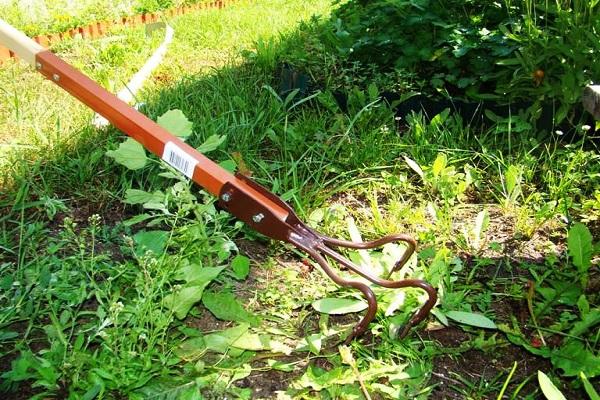
Features of weed control
Today, in the country, weeds are fought by mechanical and chemical methods. In the first case, mowing and weeding are meant. Do not hope that the problem will go away after the first event. The struggle has to be waged incessantly.
Weed control principles:
- You should not use a shovel, which can damage cultivated plants, cut weed roots.
- It is important to avoid severe ground disturbance during operation.
- They remove harmful herbs thoroughly, from the root, get even the smallest pieces of roots out of the ground, otherwise the plant will quickly restore the aboveground part.
- Plants are pulled out of the ground carefully so that the seeds do not scatter over the beds.
- The torn plants are not left in the garden, but disposed of.
For chemical control, herbicides are used. They are effective even in an advanced case, but they should be used carefully, strictly following the instructions. Processing is carried out in calm dry weather.
Work in protective equipment: rubber gloves, respirator.
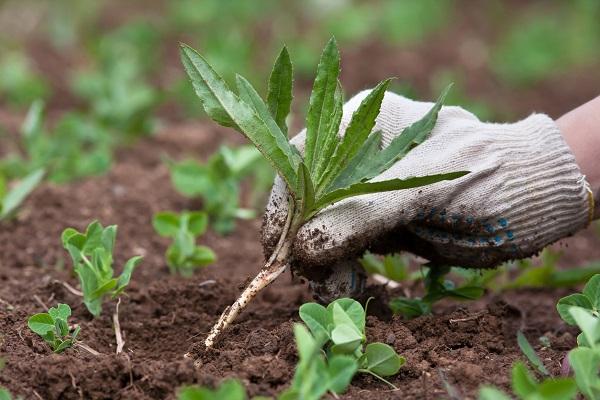
Weed control methods
Many methods of weed control have been invented. Each gardener chooses the most convenient and acceptable.
Traditional
Many summer residents consider this method to be the best of those that are carried out without chemistry. Digging is the only effective option for removing perennial weeds with a developed root system and resistance to chemicals. The work is laborious, painstaking, but they are accepted for it when other methods of struggle are powerless.
At the first stage, a pitchfork, cultivator, and tractor are used. At the second stage, weed roots are manually removed from the dug up earth.
On a weed-free area, you can put a fence. The protective strip for row spacings is a 15 cm deep ditch into which slate or metal plates are inserted.
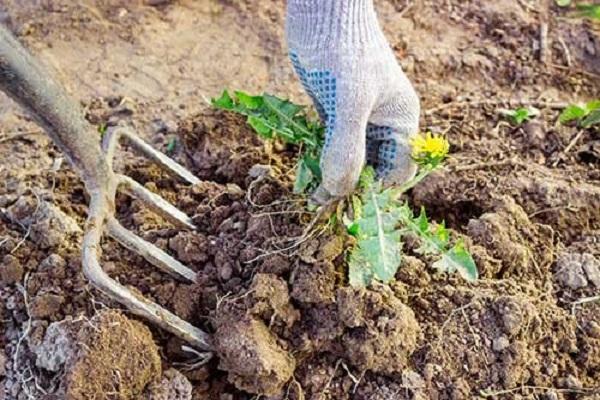
Chemical
Herbicides are highly effective and fast-acting, but toxic to nature and humans, substances that reduce the quality of the soil. Therefore, they are used only in a neglected situation.
The drugs are divided into two categories:
- continuous action - killing all vegetation, suitable for cultivating uncultivated, abandoned land;
- selective action - destroying specific types of weeds that do not affect cultivated vegetation.
You can get rid of weeds using the following popular drugs:
- Tornado;
- Lapis lazuli;
- Roundup;
- Ground;
- Agrokiller.
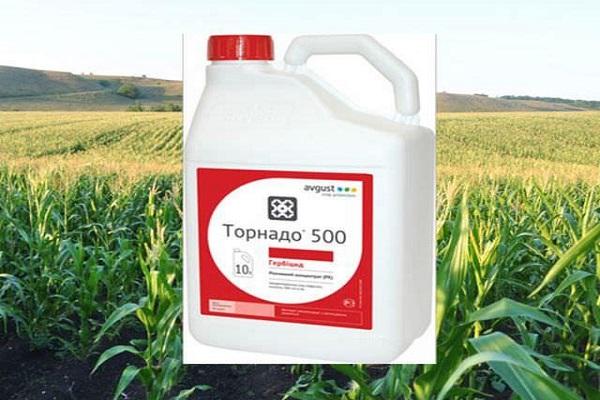
Biological
Plant organisms need sunlight to develop. In the dark, biochemical processes stop in the internal tissues of plants, the root system dies. Therefore, removing light is a good way to kill weeds without herbicides.
For this purpose, geotextiles are used - a special material for covering the soil surface. It does not rot, does not deteriorate from frost and heat. The canvas is placed on the beds, holes are made in it, through which cultivated plants pass to the light, and the weeds remain in the dark.
If there is no desire to use synthetic material, then you can cover the ground with mulch: sawdust, hay, bark. The layer should be thick, at least 5 cm, so that weeds do not break through it.
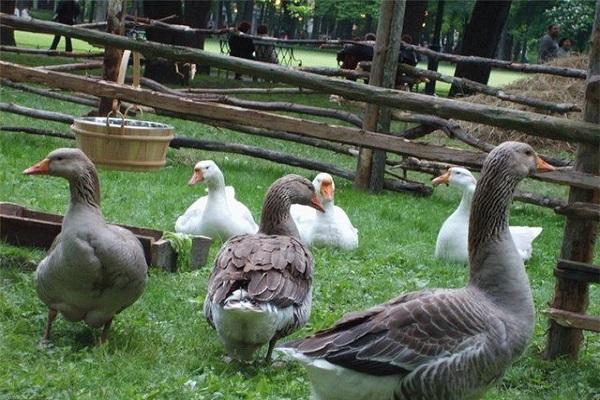
Substitute
After harvesting in the garden, there comes a favorable time for the development of weeds, because all around is empty land. To prevent the reproduction of weeds, sow green manure plants:
- clover;
- rape;
- vetch;
- lupine;
- mustard.
Siderata are useful in that:
- after digging, they become a good natural fertilizer;
- when cut and dried can be used as mulch;
- rapeseed and mustard secrete glycosides - compounds that have a herbicidal effect;
- they also secrete essential oils that repel insects, inhibiting the development of fungal infections.

Alcoholic
The method invented by the Americans is not cheap. It is necessary to purchase medical alcohol, dilute it with water in a ratio of 1 to 10. They cultivate only aisles in the beds, where weeds usually germinate. 11 liters are taken for 2 acres.
Fiery
Use a blowtorch. The removal of the grass is carried out before pecking of the sown cultivated seeds.
Harmful plants are burned out with fire, processed evenly, do not stay in one place. After the event, the ground is watered abundantly.
Exhausting
If the aerial part of any plant is damaged, this will negatively affect the root system. If you cut off all the shoots, then the plant will have to take nutrients from the roots to recover. Mowing weeds on the site should be carried out regularly, and then the supply of food in the roots will be depleted, the plants will wither.
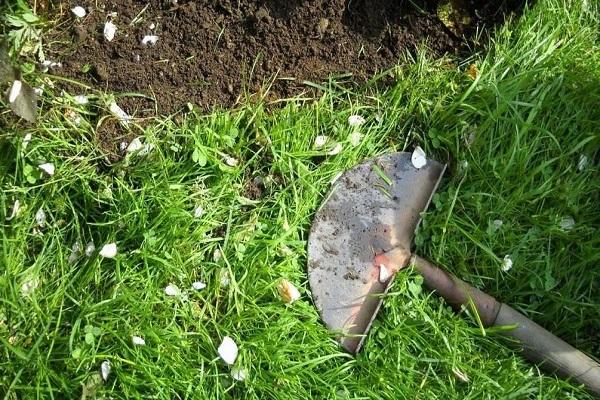
Folk remedies
Previously, gardeners did not have chemicals and equipment, they had to invent means of control. Some folk remedies have proven to be so effective that they are still used today. They are chosen by summer residents who want to overcome weeds without weeding, without chemicals.
Popular recipes:
- Take a glass of 9% vinegar, a tablespoon of salt, dishwashing liquid. Mix the salt and vinegar thoroughly. Add detergent. Stir until a homogeneous liquid solution is obtained. They are sprayed with weeds in the evening.
- You can remove weeds in an area where there are no plantings by sprinkling the previously moistened soil with salt.
- Make a highly concentrated soda solution, add a little soap. Weeds are watered with the product. Any vegetation from this area will come down, if not forever, then for a long time, since alkali has a negative effect on growth processes.
- A small amount of weeds can be poured over with boiling water or hot fat left over from frying in a pan.

Preventive measures
Preventing the appearance of weeds is easier than dealing with its destruction. To reduce the likelihood of a problem, follow these preventative guidelines:
- Before use, compost or manure should be covered with polyethylene, leave it like this for the whole summer. In the final fertilizer, due to excessive heat release, weed seeds die.
- A similar procedure is carried out on vegetable beds: they are covered with foil 2-3 weeks before sowing so that the seeds in the soil die.
- On small-seeded crops, before the emergence of shoots, transverse harrowing is carried out to protect against weeds.
- Mowed plants with seeds should not be given to livestock without steaming. Many seeds remain alive even after passing through the digestive system of the animal, get into the manure, and germinate again.
Keeping your garden clean is a challenge. Fortunately, the arsenal of struggle is large: summer residents choose the simplest and most convenient ways for themselves. For greater efficiency, experienced gardeners are advised to act in a complex manner.
